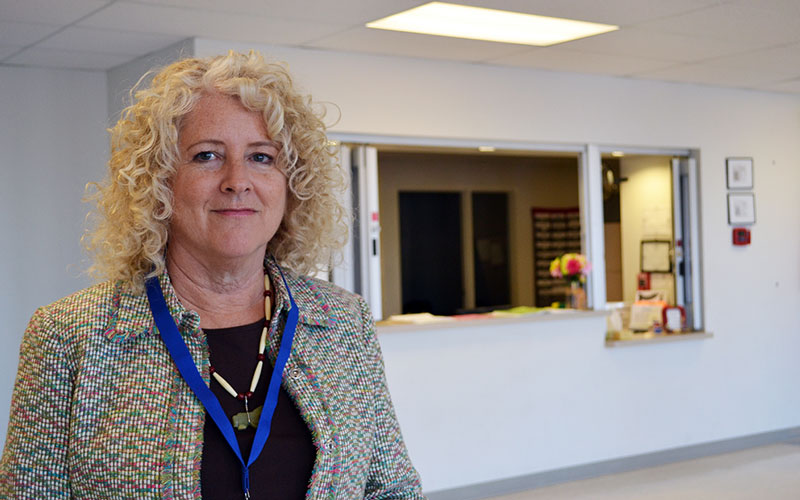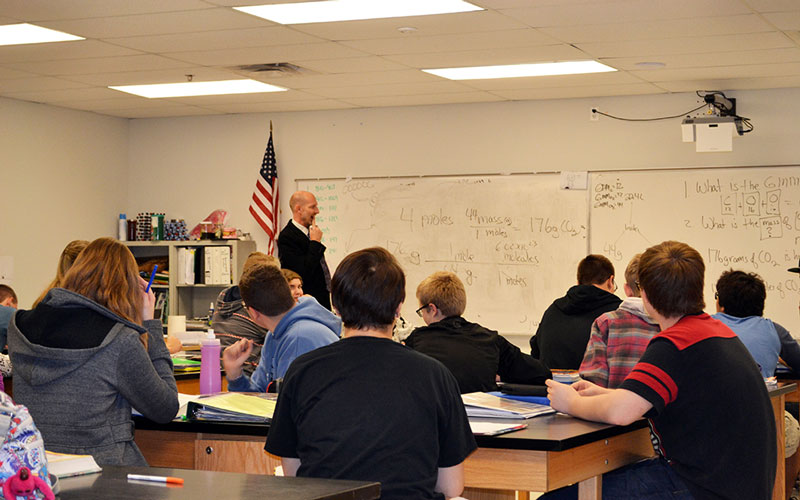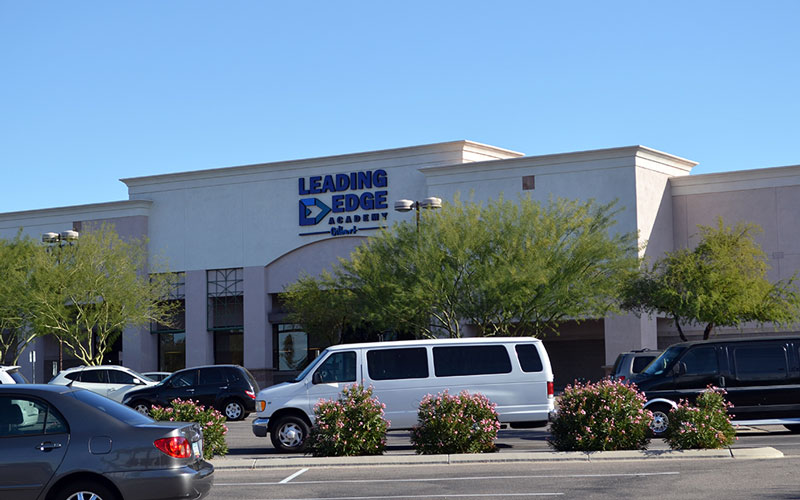Nestled between a taco shop, a gas station and a church lies the Gilbert campus of Leading Edge Academy. A former Albertsons grocery store on the strip mall is what the small public school calls home.
Leading Edge’s campus is one of more than 600 charter schools in Arizona, which has been fostering the often misunderstood educational system for 20 years.
“It’s kind of what I would call a hybrid model,” said Becki Krueger, Leading Edge’s business manager. “We’re a public-funded, privately run company, basically.”
Charters receive per pupil funding from the state like traditional district public schools but differ in not being able to receive funding for facilities and cannot sell bonds and pass overrides. State law requires charters to admit applying students on a first-come-first-serve basis unlike private schools.
“We are under the same rules as a district school. We cannot turn away students,” Krueger said.
Charter school enrollment has steadily grown to more than 170,000 students since the State Legislature approved the school system in 1994. The state has just more than 1 million K-12 students in public schools. The goal of the charter school system, according to Arizona Charter Schools Association CEO Eileen Sigmund, is “to improve student achievement and provide parents a choice.”
School choice is a popular idea among charter school supporters, who say that not all students perform well in large, traditional public schools.
Charter schools in Arizona are diverse, varying from Montessori to Waldorf to STEM, Sigmund said. The schools either operate independently, belong to public school district or are members of a charter company. Leading Edge brands its campuses as small schools with a family-like atmosphere. Great Hearts Academies promotes a classical education in its school network.
“It is a spectrum of what the community needs and wants and what leaders want to begin,” Sigmund said.
Lori Anderson, a principal at Leading Edge, said she spent the beginning of her career in a Texas region where district schools were the only option. The lack of competition gave less incentive to improve, she said.
“Arizona gets a lot of grief about not doing things right with education, but I think that’s one thing that they have done well: building an atmosphere and an environment that’s friendly for charter schools,” she said. “I just think choice makes us all better.”
Although every charter differs in its performance on state and national tests, Arizona charters have performed better as a whole than the Arizona average.
Charters must teach to the same state standards and take the same standardized tests as district schools, but charter operators say they go beyond that.
“To us, those standards are not even a benchmark,” Great Hearts CEO Christine Jones said. “We maintain our academic rigor at a much higher level than whatever the state minimum is.”
The recently released AzMERIT scores show charter students scoring 10 percent and 8 percent higher on the English and Math tests, respectively, than the rest of the state, according to the Arizona Charter Schools Association.
Sigmund said results from the National Assessment of Educational Progress (NAEP) demonstrated the quality of Arizona charter schools.
“We are top in the nation, and I cannot not emphasize that result,” she said.
Rep. Eric Meyer, D-Paradise Valley, said one of the goals of the charter school system was to give an option to families in low-income regions. He points to ASU Preparatory Academy’s Downtown Phoenix campus as a great example. The high school graduated its first class this year, saying that 76 percent of the students were moving on to a four-year university.
“They’re graduating lots of kids. Their dropout rate is very low, and then a lot of those kids are going on to postsecondary education. That’s a model that looks like it’s worked,” he said.
Meyer said there needs to be a plan to invest in more vulnerable neighborhoods, as opposed to wealthier regions such as Scottsdale.
“You could just say, ‘You can’t open up a charter school within three or five miles of an A or B-ranked school.’ Those neighborhoods are being served adequately now,” he said.
Although Meyer acknowledged that every case is different, he said he believes many charter school companies have profit motives.
“I’m not saying that happens uniformly, but it does happen. These entities are set up to make money, and in some cases, they’re owned by out-of-state companies, and their goal is to turn a profit for their shareholders,” he said.
Christine Jones of the nonprofit Great Hearts said operating as a for-profit would have hindered its vision, although it is “appropriate and perfectly legal.”
“But we’ve determined that, first of all, we don’t exist to make money off the state, and second of all, that our stated goal to teach truth, beauty and goodness and to lead with virtue and integrity seemed incompatible with a for-profit model to the founders of this organization,” she said.
Sigmund said less than 5 percent of Arizona charters operate through for-profit companies, but she said it used to be a more common phenomenon. And that, she said, was out of necessity.
“When you start a school, you need to have a facility, you need to have teachers, you need to have marketing, and you’re not paid by the state,” she said. “So a lot of our leaders 10-15 years ago were [investing] their own personal savings.”
Banks would only loan to for-profit organizations in some cases, Sigmund said. But the increased availability of grants to charter start-ups made it possible to switch to nonprofit. Imagine Schools, which runs several campuses in the state, transitioned to nonprofit this summer.
Leading Edge is a nonprofit organization, but Lori Anderson said it has experienced benefits from the business background of some of its leaders. She said having a customer service mindset that spurs the school to provide the best education possible.
“We have to think about what’s best for our kids, even if it’s not the most convenient thing for us,” she said.
Like all schools, Arizona charters need the state to figure out its funding plan for education.
Gov. Doug Ducey’s Classrooms First Council, which has set a goal of simplifying the school funding formula and establishing funding equity between districts and charters. Lawmakers and educators agree that the current details of school funding are complex.
“I think there’s only about five people in the entire state that totally understand it,” said Rep. Debbie Lesko, R-Glendale.
Eileen Sigmund said a pause in charter enrollment growth might be realistic due to the state’s recession and education budget cuts. But a solid funding plan would trigger growth again, she said.
“Arizona is on the path to stable and predictable funding, and that’s what our school leaders want to see before they invest in expansion,” she said.


